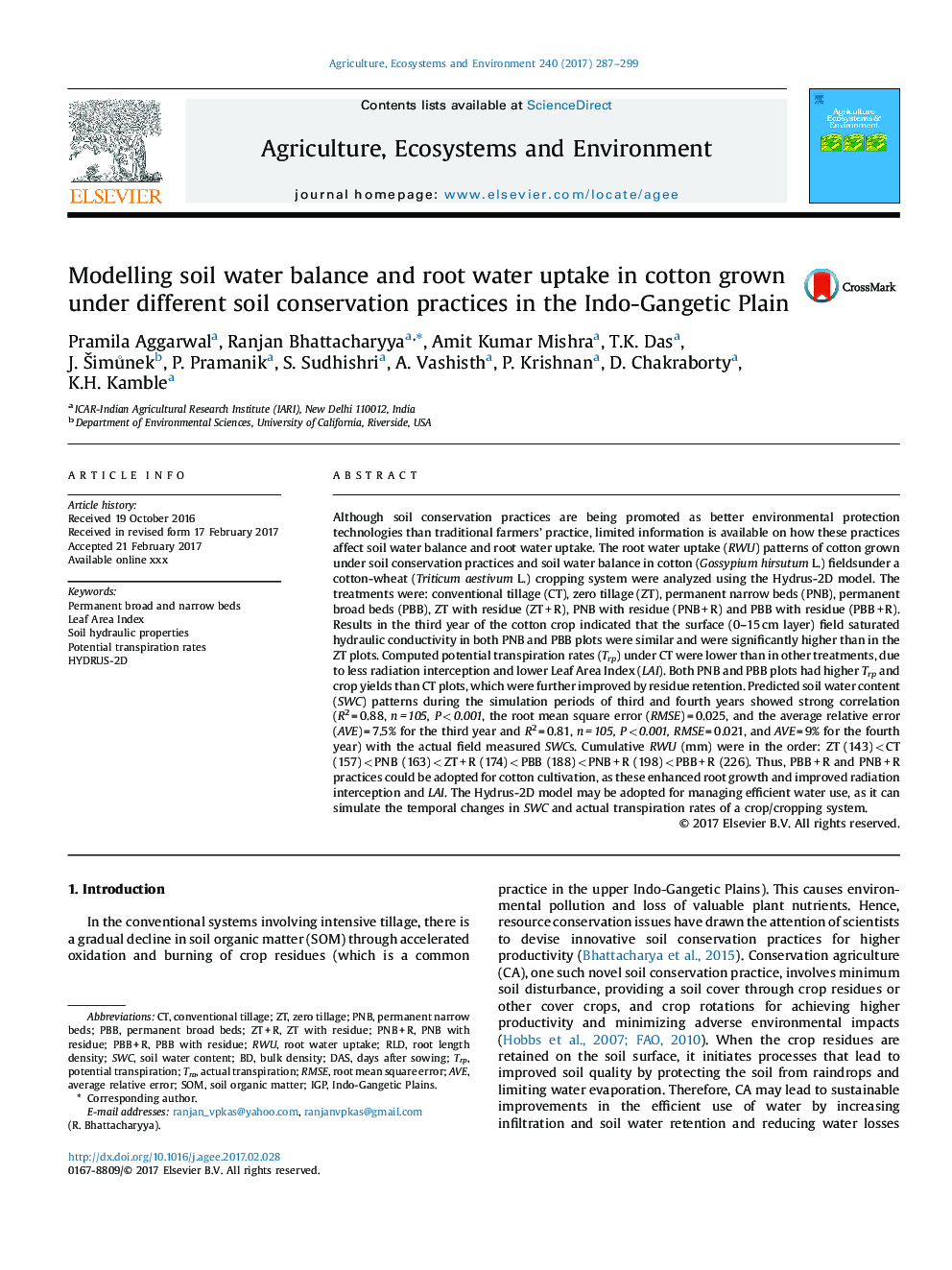| Article ID | Journal | Published Year | Pages | File Type |
|---|---|---|---|---|
| 5538177 | Agriculture, Ecosystems & Environment | 2017 | 13 Pages |
Abstract
Although soil conservation practices are being promoted as better environmental protection technologies than traditional farmers' practice, limited information is available on how these practices affect soil water balance and root water uptake. The root water uptake (RWU) patterns of cotton grown under soil conservation practices and soil water balance in cotton (Gossypium hirsutum L.) fieldsunder a cotton-wheat (Triticum aestivum L.) cropping system were analyzed using the Hydrus-2D model. The treatments were: conventional tillage (CT), zero tillage (ZT), permanent narrow beds (PNB), permanent broad beds (PBB), ZT with residue (ZT + R), PNB with residue (PNB + R) and PBB with residue (PBB + R). Results in the third year of the cotton crop indicated that the surface (0-15 cm layer) field saturated hydraulic conductivity in both PNB and PBB plots were similar and were significantly higher than in the ZT plots. Computed potential transpiration rates (Trp) under CT were lower than in other treatments, due to less radiation interception and lower Leaf Area Index (LAI). Both PNB and PBB plots had higher Trp and crop yields than CT plots, which were further improved by residue retention. Predicted soil water content (SWC) patterns during the simulation periods of third and fourth years showed strong correlation (R2 = 0.88, n = 105, P < 0.001, the root mean square error (RMSE) = 0.025, and the average relative error (AVE) = 7.5% for the third year and R2 = 0.81, n = 105, P < 0.001, RMSE = 0.021, and AVE = 9% for the fourth year) with the actual field measured SWCs. Cumulative RWU (mm) were in the order: ZT (143) < CT (157) < PNB (163) < ZT + R (174) < PBB (188) < PNB + R (198) < PBB + R (226). Thus, PBB + R and PNB + R practices could be adopted for cotton cultivation, as these enhanced root growth and improved radiation interception and LAI. The Hydrus-2D model may be adopted for managing efficient water use, as it can simulate the temporal changes in SWC and actual transpiration rates of a crop/cropping system.
Keywords
Related Topics
Life Sciences
Agricultural and Biological Sciences
Agronomy and Crop Science
Authors
Pramila Aggarwal, Ranjan Bhattacharyya, Amit Kumar Mishra, T.K. Das, J. Šimůnek, P. Pramanik, S. Sudhishri, A. Vashisth, P. Krishnan, D. Chakraborty, K.H. Kamble,
